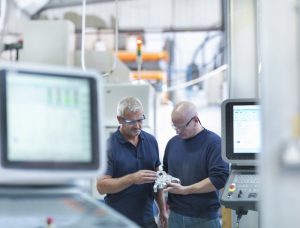‘Quality‘ means many things to many people. It’s subjective and depends on the industry and product being made, but the fundamental objective is to provide the best product to the right standard associated to fit, form and function. And cost and required profit margin must also be taken into account.
Given the speed at which consumers demand variety and personalisation, manufacturing has to be agile and elastic, but consistent. The impact of poor quality has wide commercial implications, depending on where the issue is identified and the extent of it. The commercial impact of poor quality can range from 5 to 40 percent of total revenue, but varies according to where the issue(s) is identified: pre-production, post-production or infield.
Some may be sceptical about these ranges, especially when relating them to multi-million and multi-billion £ businesses, but the examples are there for all to see when the high cost of identifying a quality issue hits the field. For example:
Samsung in 2016 blamed lithium-ion batteries for causing its Galaxy Note 7 mobile phones to overheat and catch fire, a fault that led to the global recall of millions of devices and damaged consumer confidence in the world’s biggest maker of smartphones. The company permanently ended production of its flagship smartphone in October – a move that is expected to cost the company an estimated $5.3bn in lost profits. (The Guardian, 23 January 2017)
The level of complexity and detail in modern manufacturing for products used every day has become impossible to manage via manual or human efforts. Assistance from technology and engineering have been prevalent since the introduction of the steam engine, but as we navigate through the Fourth Industrial Revolution (Industry 4.0), artificial intelligence is becoming a common theme. But let’s break this term down: Artificial - made by humans, especially in imitation of something natural; Intelligence – the ability to acquire and apply knowledge and skills. So, really we’ve been applying AI for quite a while, but now we're applying it to computers.
So how do we apply AI to the manufacturing process? This process is founded on what SAS does best -- understanding data, extracting insight and learning from the outputs. Analytics is all about iteration and learning, and as we learn, we change or influence the next step -- this can also be referred to as machine learning. The benefits of machine learning are wide and varied and, in the right hands, can provide extensive value to your business. As well as automation of repetitive processes, it can be used to identify unseen relationships and influences on a process or data set, and extract insights quicker and in more detail than ever before.
In the past SAS explained some areas of advanced analytics in regards to the traditional newspaper; if you were offered yesterday’s newspaper what is it worth? Very little or maybe nothing. Today’s newspaper? The going rate. Tomorrow's newspaper? Priceless, right? Given the choice, how much would Samsung have paid in 2015 to know what they know now?
AI is here now and taking effect. The people and businesses that understand what it is and how it can help will prosper with greater insight, agility and growth. Those that don’t will have to work harder and longer to compete. Many software vendors claim capabilities around AI, cognitive and machine learning, and I’m sure they have them to some extent -- but like the evolution of any technology, the more you focus on it, invest in and develop it, the better you are at it. SAS has done this for 40 years and that's why we lead the pack according to Forrester and Gartner independent industry reviews.
SAS has taken its extensive knowledge and investments to harness the power to know, into the manufacturing world and the four major phases of manufacturing. SAS is connecting processes and capabilities from pre-production under the MAKE process; monitoring machines, systems and data through to post production under the PLAN process, looking at logistics and demand forecasting. It's also connecting business insight to the consumer with the ENGAGE process, and constantly monitoring product performance, adoption and sentiment under the SERVICE process for infield product satisfaction.
All successful businesses invest in operational platforms like ERP, finance and billing systems, and more recently business have seen extensive value in productivity platforms with office tools and customer relationship management systems. The next wave is here: Analytical platforms that encompass AI and machine learning to support your organisation beyond the traditional key performance indicators into a new era.
Find out more about how analytics can help with quality in manufacturing organisations.
